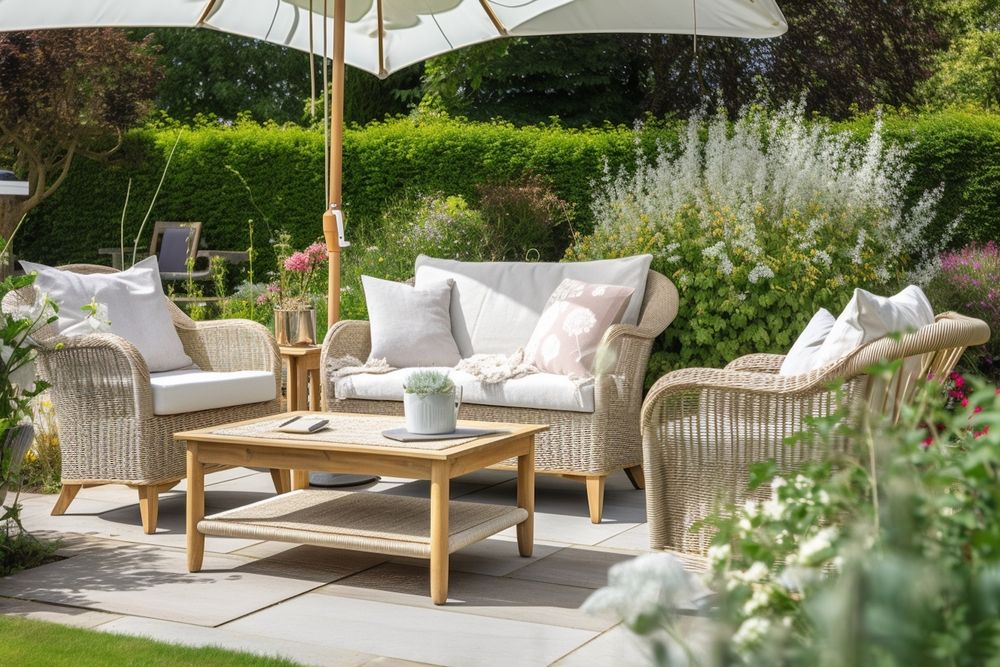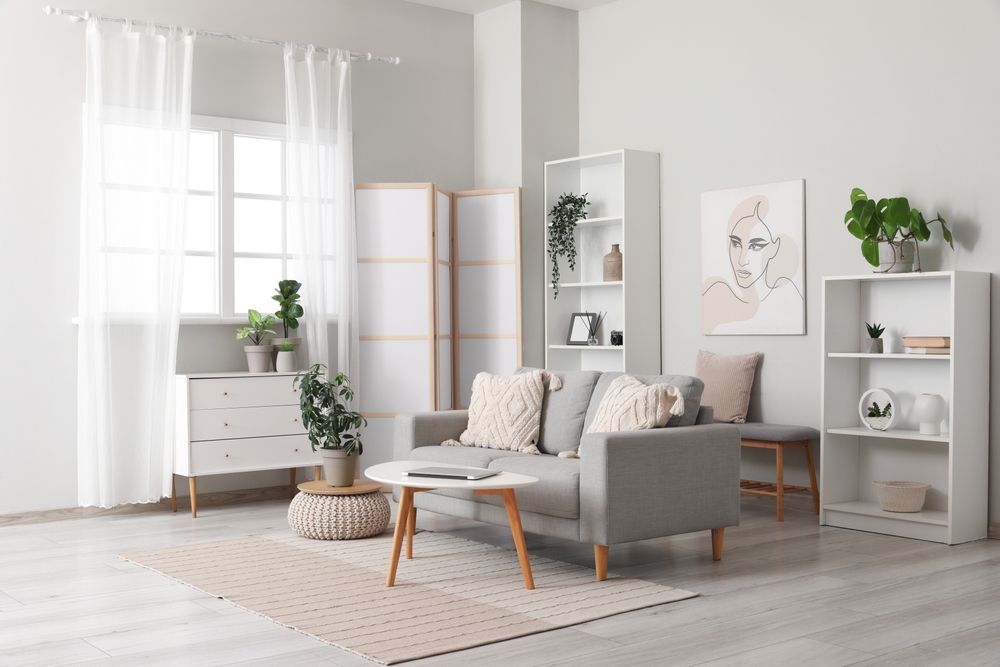Creating an inviting outdoor space is about more than just looks — it’s about finding furniture that can withstand the elements, suit your lifestyle, and remain comfortable season after season. Whether you're designing a cozy balcony nook or a full backyard retreat, choosing the right outdoor furniture takes planning and a smart understanding of materials, function, and maintenance.
Unlike indoor pieces, outdoor furniture must handle fluctuating temperatures, moisture, UV rays, and more. So before you rush to buy a set that “looks nice,” it’s essential to understand what makes outdoor furniture not just stylish, but durable and worthwhile in the long term.
Here’s everything you should know before investing in outdoor furniture for your patio, garden, deck, or balcony.
1. Choose Weather-Resistant Materials
The most important factor in outdoor furniture is how well it stands up to the weather. Exposure to sun, rain, humidity, and wind can quickly wear down poorly made pieces.
Best Materials for Outdoor Use:
-
Teak: Naturally water-resistant, durable, and ages beautifully to a silvery gray
-
Powder-coated aluminum: Lightweight, rust-resistant, and modern
-
Synthetic wicker (resin or PE rattan): Designed to mimic natural fibers but withstand moisture and sun
-
Stainless steel: Strong and rust-resistant when marine-grade (304 or 316)
-
HDPE plastic: Durable, fade-resistant, and recyclable
Materials to Avoid or Use with Caution:
-
Untreated wood: May warp or rot over time
-
Iron: Strong but prone to rust unless treated and maintained
-
Cheap plastics: Can fade, crack, or become brittle under sunlight
Always check if materials are UV-stabilized, moisture-sealed, or specifically rated for outdoor use.
2. Think About Function and Layout
Your furniture should match the way you use your outdoor space. Consider how many people you'll typically host, how much room you have, and what type of activities the space supports.
Questions to Ask Yourself:
-
Do you want to dine outdoors, lounge, or both?
-
How many guests do you typically entertain?
-
Is the space exposed to direct sun, wind, or shade?
-
Do you need stackable or foldable furniture for storage?
Measure your space before you shop, and use tape or cardboard to visualize layouts. Leave room for movement and make sure chairs can slide out comfortably.
3. Prioritize Comfort and Ergonomics
It’s not enough for outdoor furniture to look good — it needs to feel good too. High-quality furniture should be as comfortable as your indoor pieces, especially for long gatherings or weekend lounging.
Comfort Features to Consider:
-
Contoured seats and supportive backs
-
Generously sized chairs (especially armchairs and loungers)
-
Upholstered or cushioned seating with weatherproof covers
-
Ottomans, side tables, or adjustable backrests for versatility
If buying in-store, sit on every piece to test comfort. If shopping online, read user reviews to learn how the furniture feels in real use.
4. Invest in Quality Outdoor Fabrics
Cushions and fabrics are typically the first part of your furniture to wear out. For maximum longevity, look for textiles specifically designed for outdoor use.
Best Outdoor Fabric Options:
-
Solution-dyed acrylic (like Sunbrella): UV-resistant, fade-resistant, mold- and mildew-resistant
-
Olefin: Durable, moisture-resistant, and affordable
-
Polyester blends: Lightweight and quick-drying, but may not last as long in direct sun
Tips for Long-Lasting Cushions:
-
Choose removable, washable covers
-
Store cushions during rainstorms or off-season
-
Use covers or storage boxes to protect fabric when not in use
Avoid untreated cotton or indoor materials — they degrade quickly when exposed to outdoor conditions.
5. Evaluate Maintenance Needs
Some materials are low-maintenance and easy to clean, while others require routine care to keep looking their best. Know what you’re signing up for before you buy.
Low-Maintenance Materials:
-
Aluminum
-
Synthetic wicker
-
HDPE plastic
ADVERTISEMENT -
Powder-coated steel
Higher-Maintenance Options:
-
Teak (requires periodic sealing or oiling to maintain its golden hue)
-
Iron (needs rust protection)
-
Natural wicker or untreated wood (requires careful storage and occasional refinishing)
If you want furniture you can “set and forget,” opt for easy-care finishes and wipeable surfaces.
6. Consider Storage and Off-Season Use
Even the most weather-resistant furniture benefits from protection during harsh weather or winter months. Think ahead about where and how you’ll store your pieces.
Smart Storage Tips:
-
Choose foldable or stackable designs for easier indoor storage
-
Use heavy-duty, breathable covers during winter
-
Consider built-in storage benches or multipurpose furniture
-
If storage space is limited, go for rustproof and fade-resistant options you can leave outside year-round
Proper storage prolongs the life of your investment and keeps your outdoor setup looking fresh for years to come.
7. Plan for Accessories and Shade
Enhance your outdoor furniture with the right accessories and protection to maximize comfort and usability.
Must-Have Add-Ons:
-
Umbrellas or pergolas for sun protection
-
Outdoor rugs to define space and add warmth
-
Side tables for drinks, books, or planters
-
String lights or solar lanterns for nighttime ambiance
-
Throw pillows and blankets (use waterproof or outdoor-rated textiles)
These small additions make your space more livable and encourage longer, more enjoyable outdoor experiences.
8. Set a Realistic Budget and Prioritize Quality
Outdoor furniture can range from inexpensive plastic chairs to luxury-grade teak loungers. It’s tempting to go cheap, but quality pieces often last longer and cost less in the long run.
Budget Breakdown:
-
Entry-level ($100–$500): Basic bistro sets, folding chairs, lightweight materials
-
Mid-range ($500–$1,500): Sturdier dining sets, cushioned seating, durable frames
-
High-end ($1,500+): Premium materials, brand-name cushions, modular designs
Start with the essentials — like a great dining table or seating area — and add pieces over time as your budget allows.
9. Check Return Policies and Warranties
Outdoor furniture is an investment — and you want protection in case it arrives damaged or wears out prematurely.
What to Look For:
-
At least a 1-year warranty on frame and cushions
-
Easy-to-understand return or exchange policy
-
Replacement parts availability
-
Clear terms on coverage for rust, fading, or construction defects
Higher-end brands often offer longer warranties and customer service support.
10. Shop Seasonally for the Best Deals
Timing your purchase can help you save significantly. Outdoor furniture often goes on sale in late summer or early fall, when stores clear out inventory.
Shopping Tips:
-
Look for pre-season sales in spring
-
Find clearance deals in August–October
-
Sign up for newsletters or join store memberships for early access
-
Consider floor models or last-season designs for discounts
Plan ahead — it may take several weeks for shipping and setup during peak times.





